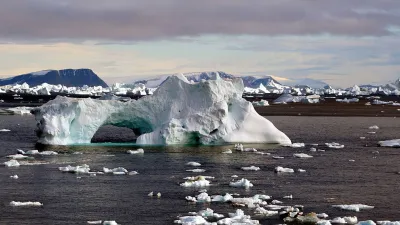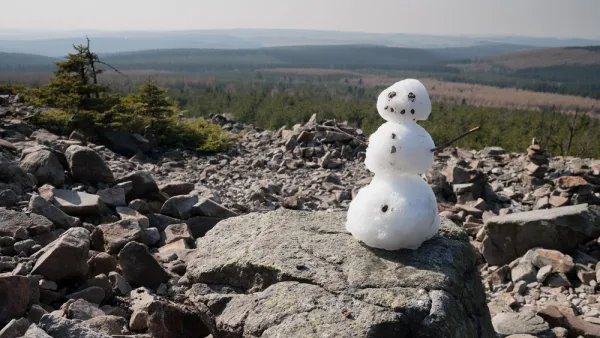Justin Gillis tags along with researchers who are trying to pinpoint just how much of the world's coastlines will be inundated by dramatically rising sea levels. By looking at historical records scientists are beginning to paint a grim picture.

Just how high can we expect global sea levels to rise in the coming decades due to global warming and melting polar ice?
"The question has taken on new urgency in the aftermath of Hurricane Sandy, which caused coastal flooding that scientists say was almost certainly worsened by the modest rise of sea level over the past century. That kind of storm tide, the experts say, could become routine along American coastlines by late in this century if the ocean rises as fast as they expect."
Gillis profiles the work of paleoclimatologists such as Maureen E. Raymo of Columbia University, who is leading a team of scientists studying climate history. "Their evidence that [greenhouse] gases represent a problem is based not just on computerized forecasts of the future, as is commonly believed, but on what they describe as a growing body of evidence about what occurred in the past."
"In previous research [PDF] ," notes Gillis, "scientists have determined that when the earth warms by only a couple of degrees Fahrenheit, enough polar ice melts, over time, to raise the global sea level by about 25 to 30 feet. But in the coming century, the earth is expected to warm more than that, perhaps four or five degrees, because of human emissions of greenhouse gases."
The next few decades could see the release of enough emissions to make dramatic sea level increases inevitable, resulting in a "humanitarian crisis lasting many hundreds of years."
"If the rise is slower than expected, society may have time to adjust, or to develop new technology to solve the problem of greenhouse emissions," says Gillis. "But many scientists are plagued by a nagging fear that the opposite will occur — that their calculations will turn out to have been too conservative, and social stability will eventually be threatened by a rapid rise of the sea."
“At every point, as our knowledge increases,” Dr. Raymo said, “we’ve always discovered that the climate system is more sensitive than we thought it could be, not less.”
FULL STORY: How High Could the Tide Go?

Analysis: Cybertruck Fatality Rate Far Exceeds That of Ford Pinto
The Tesla Cybertruck was recalled seven times last year.

National Parks Layoffs Will Cause Communities to Lose Billions
Thousands of essential park workers were laid off this week, just before the busy spring break season.

Retro-silient?: America’s First “Eco-burb,” The Woodlands Turns 50
A master-planned community north of Houston offers lessons on green infrastructure and resilient design, but falls short of its founder’s lofty affordability and walkability goals.

Test News Post 1
This is a summary

Analysis: Cybertruck Fatality Rate Far Exceeds That of Ford Pinto
The Tesla Cybertruck was recalled seven times last year.

Test News Headline 46
Test for the image on the front page.
Urban Design for Planners 1: Software Tools
This six-course series explores essential urban design concepts using open source software and equips planners with the tools they need to participate fully in the urban design process.
Planning for Universal Design
Learn the tools for implementing Universal Design in planning regulations.
EMC Planning Group, Inc.
Planetizen
Planetizen
Mpact (formerly Rail~Volution)
Great Falls Development Authority, Inc.
HUDs Office of Policy Development and Research
NYU Wagner Graduate School of Public Service




























